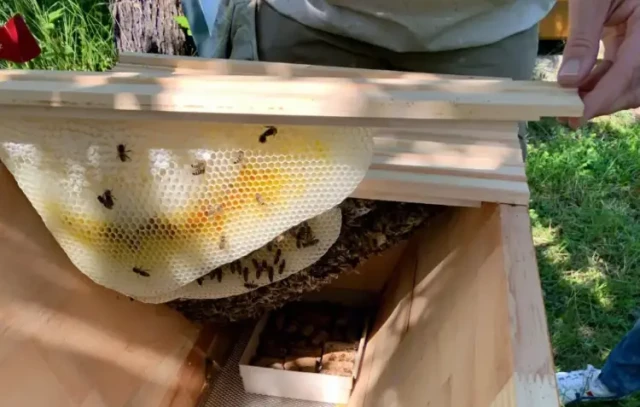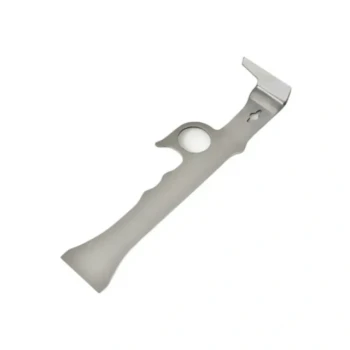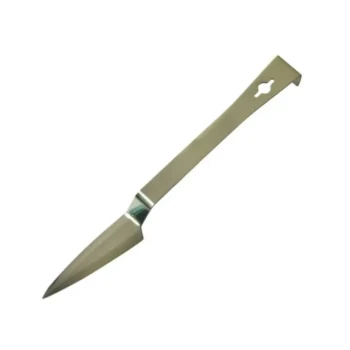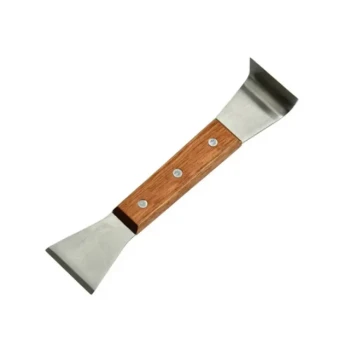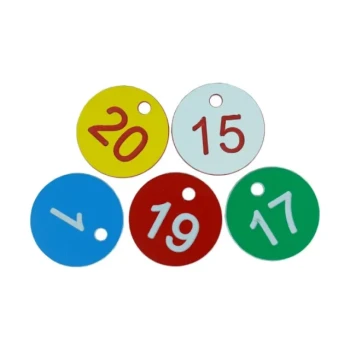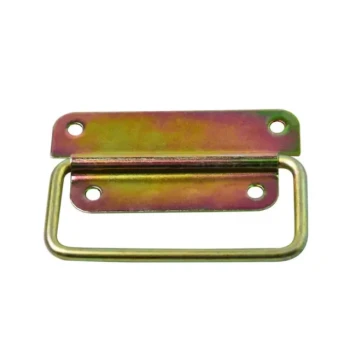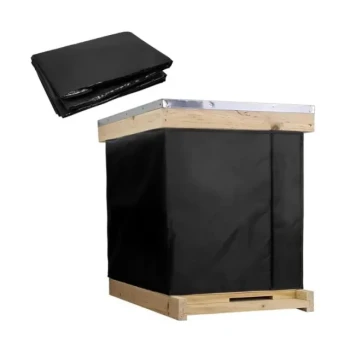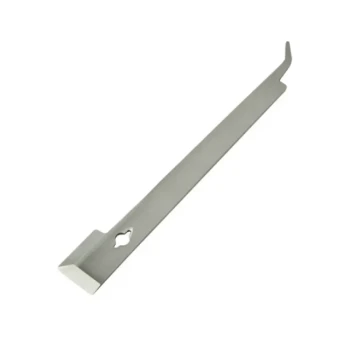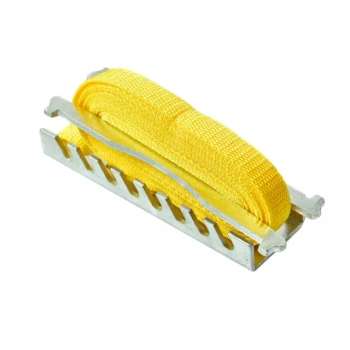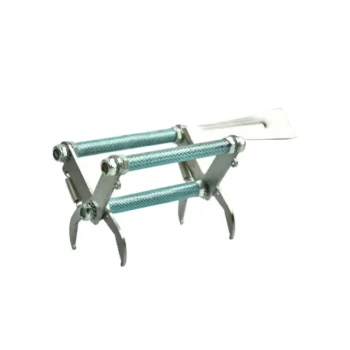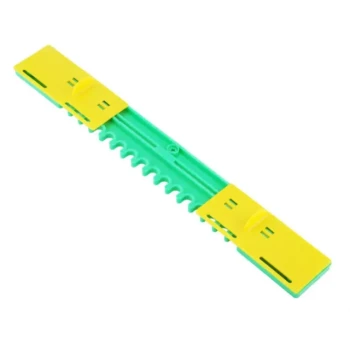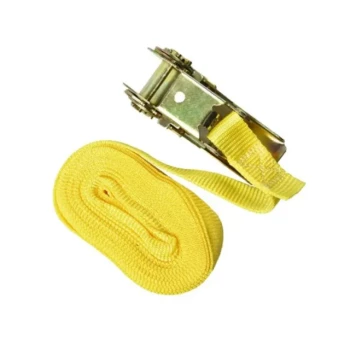For beekeepers, harvesting honey from top bar hives presents a unique opportunity to practice sustainable beekeeping while preserving hive health and honey quality. Unlike traditional Langstroth hives, top bar hives require minimal invasive techniques, making them ideal for those prioritizing bee welfare. This guide covers every step—from preparation to post-harvest care—using methods that ensure efficiency, safety, and respect for your colony.
Preparing Your Hive and Tools for Success
Key Goal: Minimize stress on bees while ensuring a clean, efficient harvest.
Essential Tools:
- Sharp knife or uncapping fork: For clean comb cutting (avoid serrated blades to reduce wax debris).
- Food-grade buckets or jars: Preferable to cheesecloth for straining; they’re reusable and reduce contamination risks.
- Bee brush or smoker: Gently redirect bees away from combs during harvest.
Pre-Harvest Checks:
- Assess honey stores: Leave at least 30% of honey for bees’ winter survival.
- Choose optimal timing: Harvest during warm, dry days when bees are active but less defensive (mid-morning is ideal).
- Verify honey ripeness: Combs with fully capped cells indicate low moisture content (~17–18%), reducing fermentation risks.
Pro Tip: "Smoke calms bees by masking alarm pheromones. Use sparingly—over-smoking can stress the colony."
Step-by-Step Comb Cutting and Honey Extraction
The Crush-and-Strain Method: A beginner-friendly, low-cost approach.
- Remove target bars: Identify honey-heavy combs (avoid brood combs) and gently brush bees off.
- Cut comb from bars: Angle your knife horizontally to slice the comb’s base, preserving the bar’s structure for reuse.
- Crush combs in a bucket: Break them into small pieces to release honey.
- Strain efficiently: Pour crushed comb into a double-bucket strainer (with a coarse and fine mesh) or a jar covered with a mesh screen. Gravity will filter honey over several hours.
Why avoid rotary extractors? Top bar combs lack wired foundations, making them prone to collapse under centrifugal force.
Straining and Storing Honey for Maximum Freshness
Food-Grade Buckets vs. Cheesecloth:
- Buckets offer superior filtration, removing wax particles and bee debris while maintaining honey’s natural enzymes.
- Cheesecloth may require multiple layers and can retain more pollen, which some consumers prefer for raw honey.
Storage Best Practices:
- Temperature: Keep honey below 75°F (24°C) to prevent crystallization or flavor loss.
- Containers: Use dark glass or BPA-free plastic to block UV light and odors.
- Shelf life: Properly strained honey lasts indefinitely, but flavor peaks within 1–2 years.
Did you know? Honey’s low moisture content and acidity naturally inhibit bacterial growth, making it self-preserving.
Post-Harvest Hive Care and Bee Welfare
Prioritize Colony Recovery:
- Replenish resources: Return empty bars to the hive’s edges; bees will rebuild comb faster than from scratch.
- Monitor for robbing: Reduce hive openings temporarily to deter opportunistic bees or pests.
- Check queen health: Ensure she’s active post-harvest; a stressed colony may show reduced egg-laying.
Long-Term Sustainability:
- Avoid overharvesting: Bees need honey for energy and insulation.
- Plant bee-friendly flora: Clover, lavender, and wildflowers support nectar flow for future harvests.
Ready to Elevate Your Beekeeping Practice?
Harvesting honey sustainably from top bar hives not only protects your bees but also yields purer, tastier honey. For commercial apiaries and distributors, HONESTBEE offers wholesale-focused beekeeping supplies—from durable bucket strainers to hive tools—designed to streamline your workflow while safeguarding bee health. Explore our catalog today and harvest with confidence!
Final Word: Top bar hives remind us that beekeeping is a partnership with nature. By adopting these methods, you ensure thriving colonies and honey that reflects the care behind every drop.
Products You Might Be Looking For:
Explore top bar beehives for sustainable beekeeping
Visual Guide
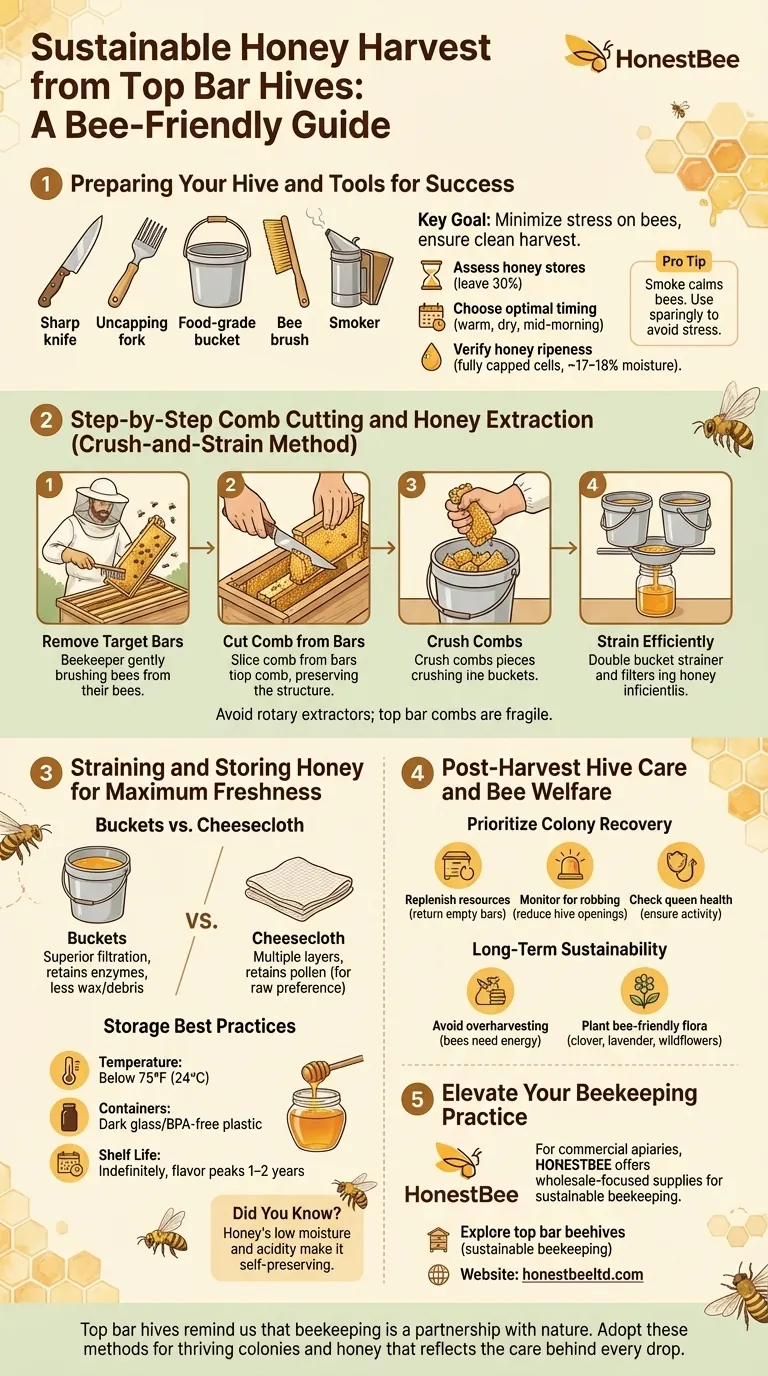
Related Products
- Top Bar Beehive for Beekeeping Wholesales Kenya Top Bar Hive
- Long Langstroth Style Horizontal Top Bar Hive for Wholesale
- HONESTBEE Professional Multi-Functional Hive Tool with Ergonomic Wood Handle
- HONESTBEE Advanced Ergonomic Stainless Steel Hive Tool for Beekeeping
- HONESTBEE Professional Long Handled Hive Tool with Precision Cutting Blade
Related Articles
- How to Choose Between Top Bar and Langstroth Hives for Effortless Beekeeping
- How to Relocate Beehives Safely: A Science-Backed Guide for Beekeepers
- How to Inspect Top Bar Hives Without Damaging Comb: A Beekeeper’s Guide
- Beyond the Box: The Psychology of Space in Top Bar Beekeeping
- How to Prevent Cross-Combing in Foundationless Hives: A Beekeeper’s Guide
